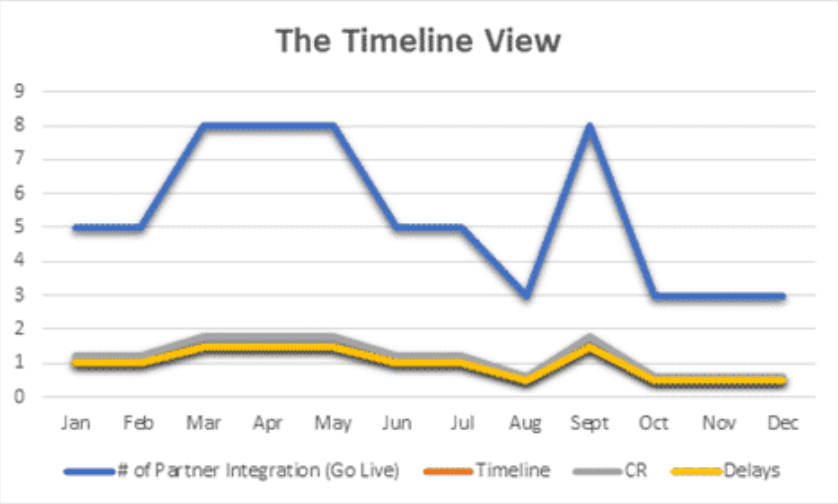If you’re in search of the best low code platform, you are at the right place! In today’s tech-driven business landscape, integrating technology into business strategy is essential for success. Scaling organizations often face performance gaps and challenges that off-the-shelf solutions can’t fully address. Customized, in-house software applications offer comprehensive and scalable solutions tailored to specific needs but come with their own set of challenges.
To bridge the gap between custom solutions and off-the-shelf software, best low code platforms have emerged as a game-changer. These platforms enable rapid application development with minimal hand-coding, empowering business and IT teams to collaborate seamlessly.
Getting to know a low code platform!
Challenges in Development :
Scaling organizations often struggle with integrations, change requests, and resource availability, leading to cost overruns and delays. A lack of planning for these issues can disrupt project timelines and budgets, impacting revenue projections.
Embracing Low-Code Solutions:
Low-code automation platforms like FlowXpert offer a powerful alternative. They provide easy API integration, microservices architecture, and security, along with visual workflow designers that allow businesses to flowchart their processes. With minimal coding requirements, low-code platforms reduce dependency on IT teams and accelerate application delivery.
The Future of App Development :
Industry experts predict that low-code development will dominate app development by 2025. Organizations that leverage low-code solutions can streamline their integrations and application development, achieving better efficiency and faster time-to-market.
Unlocking the Power of Low-Code:
If your organization aims to optimize integrations and application development, low-code automation solutions like FlowXpert can be the key. With a drag-and-drop interface and configurable features, FlowXpert empowers business users and IT teams to easily build modern applications.
Take the Next Step :
To learn more about how FlowXpert can support your business needs, schedule a discussion with our team. Embrace the future of app development and drive innovation in your organization with low-code solutions.
The Power of Low-Code Automation
Low-code automation platforms offer numerous benefits that revolutionize the way applications are developed and deployed. Let’s explore some of the key advantages:
- Accelerated Application Development: With minimal coding required, developers can focus on designing workflows and logic, significantly reducing development time. This enables businesses to quickly respond to market demands and stay ahead of the competition.
- Enhanced Collaboration: Low-code platforms facilitate seamless collaboration between business users and IT teams. Business users can actively participate in the development process, ensuring the application meets their requirements.
- Flexibility and Customization: While low-code platforms provide pre-built components and templates, they also allow for customization and extension, ensuring that the application aligns perfectly with the organization’s unique needs.
- Reduced IT Burden: Business users can build applications themselves using the visual interface, freeing up IT teams to focus on more strategic tasks. This minimizes the backlog of IT requests and accelerates the delivery of business solutions.
- Agile Iterative Approach: Low-code platforms enable organizations to adopt an agile and iterative approach to application development. Teams can quickly build prototypes, gather feedback, and make necessary changes, ensuring the final product meets user expectations.
- Scalability and Integration: Low-code platforms are designed to handle scalability seamlessly. As the organization grows, applications built on these platforms can easily accommodate increased demands and integrate with existing systems.
- Cost-Efficient Solutions: By reducing development time and the need for extensive coding, low-code platforms offer cost-efficient solutions for application development. Organizations can achieve a faster return on investment and optimize their IT budgets.
The Road to the Future
As technology continues to evolve, low-code automation is set to become an integral part of business application development. By leveraging low-code platforms like FlowXpert, organizations can unlock their full potential and drive innovation. Embracing the future of app development through low-code solutions empowers organizations to stay agile, competitive, and resilient in an ever-changing business landscape.
So, if you’re ready to streamline your integrations, accelerate application development, and embrace the power of low-code automation, schedule a discussion with our team at FlowXpert. Let us help you revolutionize the way you build and deploy applications, ensuring your business stays ahead of the curve and achieves lasting success in the digital era.
With technology becoming so profoundly woven into every aspect of business, it is now second nature to incorporate it into business strategy. Regularly reflecting on and optimizing how IT is being absorbed as a business function ensures that business units and IT teams can synchronously work towards the business’ goals.
The Struggles of Scale
As organizations scale, performance gaps and problem areas are bound to emerge. While off-the-shelf software solutions are always an option, they force you to fit your business within their limitations.
Customized software applications developed in-house are comprehensive, easily scalable for business growth, tailor-made for specific use cases, and seamlessly integrate with your existing systems.
What’s the catch? Designing and deploying these solutions is a multifold challenge. It is time-consuming and requires heavy capital investment, project planning, and stakeholder management.
How do you take your pick?
Let’s take a step back.
The primary goal of any organization is to deliver products and services which are, ideally, best in class in terms of technology, architecture, and scalability. From a bird’s eye point of view, this seems fine. But when we dig deeper into implementation, we uncover gaps in our business logic, inefficiencies in our workflows, infrastructure issues, and hidden costs, to name a few.
Take, for example, a mid-sized NBFC launches services, only roughly estimating the number of integrations in the project.
Let’s say the project estimate at the beginning was:
Number of services and products to be launched – 20 to 30
Number of third-party partner integrations – 40 to 60
Estimated budget approved – 85 to 100 lakhs
Based on these projections and the decided timeline, the management planned their revenue as 35 to 45 crores for the financial year.
Reality Check
Due to the challenges of numerous change requests, approval timelines, third-party integration bottle necks, etc., any integration project timeline looks something like this:

This is where reality creeps in, and things get interesting.
For integration projects, on an average,
- 30 to 40% additional effort is required due to the back and forth on change requests
- 5 to 10% delays occur due to skilled resource availability and infrastructure issues
While such delays and costs are expected, not planning for them leads to disarray. As a result, the NBFC will now face,
- 30 to 50% cost overruns due to change request related issues/delays
- Go-live delay, increasing the project timeline to 1.3 -1.7x times
- Total cost overrun of 50 to 70%
What can be done?
Now that we have comprehended the enterprise-level challenges around integrations and custom application development, what next?
To address the multitude of challenges during the development of customized enterprise software, we need a solution that offers:
- Easy API Integration, Microservices level architecture, API gateways, and security
- Workflow designers that allow you to flowchart your way to business journeys
- Minimal coding to remove the dependency on IT teams
The answer lies in low code automation solutions.
Gartner predicts that 65% of app development will be entirely low code by 2025.
Forrester Research describes low-code automation platforms as “application development platforms that enable rapid application delivery with minimal hand-coding, and quick setup and deployment.”
Low code is a software development approach wherein little to no coding is required to create an app or a website. Low code solutions have recently gained popularity since they provide a balance between templatized solutions and customizable workflow designs.
McKinsey’s survey states that 57% of respondents indicate their companies are at least experimenting with process automation in one or more business divisions or functions.
Low code solutions like FlowXpert offer visual modes to design and automate applications. FlowXpert’s suite of tools enables you to visually create journeys for digital applications using the drag and drop interface and configurable approach. Schedule a call with one our experts now!










